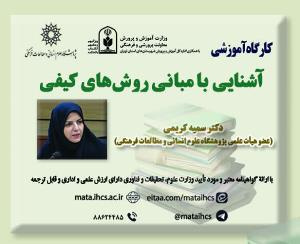تحلیل حرکت فعل در گویش بلوچی سرحدی: رویکردی زایشی (مقاله علمی وزارت علوم)
درجه علمی: نشریه علمی (وزارت علوم)
آرشیو
چکیده
ماهیت حرکت فعل در زبان های گوناگون از منظر نحوی و صرفی با رویکرد زایشی توسط زبان شناسان مختلف بررسی و تحلیل شده است. از منظر نحوی می توان به شواهد نحوی هم چون مطابقه مشخصه زمان و تصریف فعل سبک از نظر قدرت با استفاده از آزمون های حذف گروه فعلی و جابه جایی مفعول استناد کرد. همچنین، از منظر صرفی غنی بودن تصریف به دلیل مطابقه فعل با فاعل در اول شخص و دوم شخص مفرد و جمع در یکی از زمان های گذشته، حال و آینده و همچنین، وجود ساخت تصریف دو جزئی شاهدی بر حرکت فعل هستند. هدف پژوهش حاضر تبیین ماهیت حرکت فعل در گویش بلوچی سرحدی بر اساس تلفیقی از شواهد نحوی و صرفی با رویکرد زایشی است. در این راستا، داده های پژوهش حاضر از طریق ضبط گفتار آزاد و مصاحبه با 15 مرد بی سواد گویشور بلوچی سرحدی ساکن در مناطق پشت کوه و گرنچین شهرستان خاش گردآوری شدند. بر اساس شواهد نحوی، یافته ها نشان داد که مشخصه تصریف (زمان) فعل در گویش بلوچی سرحدی قوی و انگیزه حرکت فعل است. حضور گروه تصریف دو جزئی در نتیجه جابه جایی مفعول نیز عامل دیگری در تائید حرکت فعل است. علاوه بر این، بررسی شواهد صرفی نشان داد که قوی بودن تصریف فعل به دلیل مطابقه فعل با فاعل اول شخص و دوم شخص مفرد و جمع در زمان گذشته و غیرگذشته و همچنین، حضور تکواژ زمان و مطابقه به طور همزمان در فعل مؤید حرکت فعل در این گویش است.Analysis of Verb Movement in Sarhaddi Balochi Dialect: A Generative Approach
The nature of verb movement in different languages has been studied and analyzed by different linguists from a syntactic and morphological point of view based on a generative approach. From the syntactic viewpoint, agreement of tense feature and little verb inflection in strength and object shift can be cited as syntactic evidence. Moreover, as to a morphological standpoint, strong inflection due to subject verb agreement in first and second person singular and plural in one of past, present and future tenses and also the existence of split inflection are pieces of evidence indicating verb movement. The aim of this study is to explain the nature of verb movement in Sarhaddi Balochi dialect based on the combination of syntactic and morphological evidence following the generative approach. Therefore, research data were collected through recording free speech and interviewing with 15 illiterate Sarhaddi Balochi-speaking men living in Poshtkuh and Granchin areas of Khash city. Based on the syntactic evidence, the results showed the inflection (tense) feature of the verb in Sarhaddi Balochi dialect is strong and gives rise to verb movement. The presence of the split inflectional phrase is another factor in confirming the movement of the verb. Besides, the study of morphological evidence displayed that the strength of verb inflection due to the agreement of the verb with the first and second person singular and plural in past and non-past tenses, as well as the simultaneous presence of tense and agreement morphemes in the verb confirm the verb movement in this dialect.







